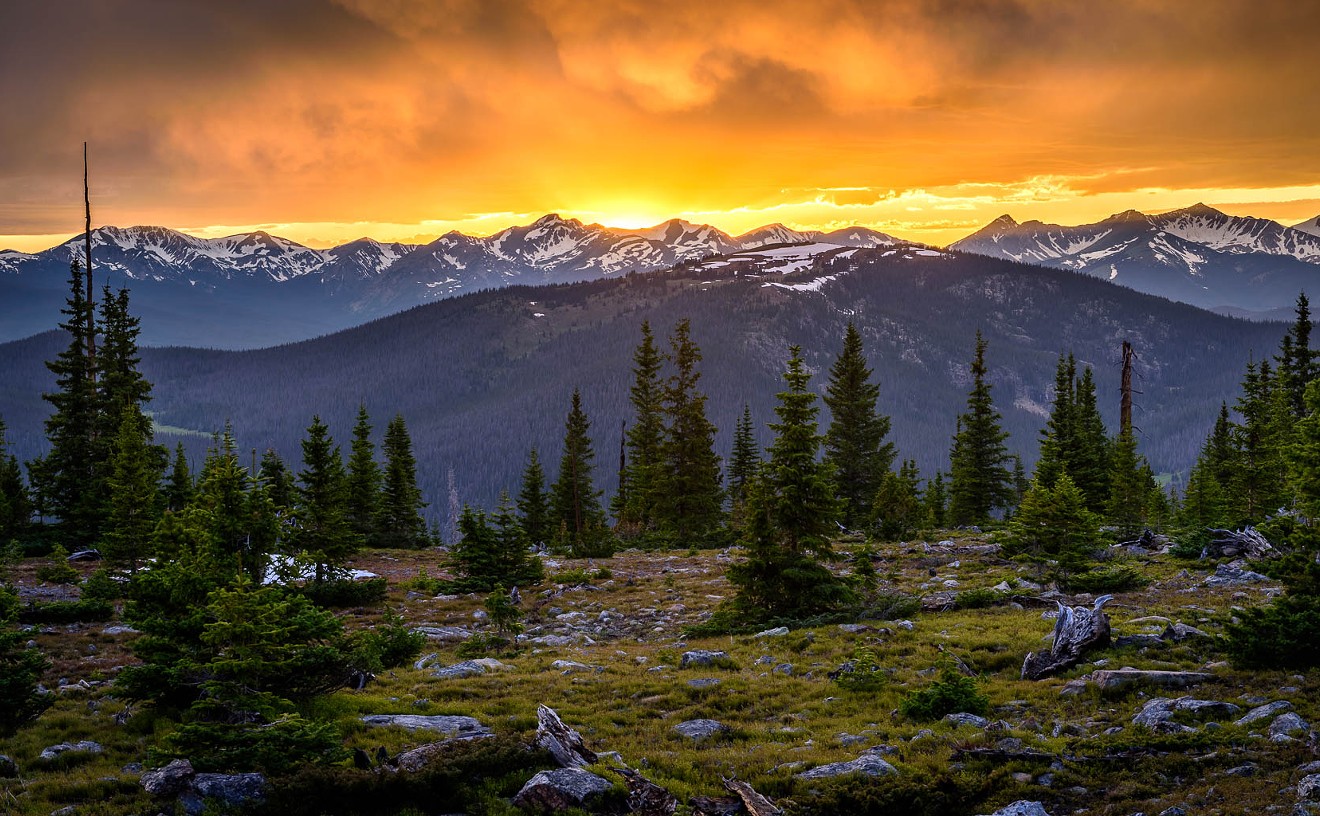Tomorrow at the Colorado Photographic Arts Center, ICE: Portraits of Vanishing Glaciers, an exhibit of Balog's astonishing ice visuals will offer a rare opportunity to see his work on the wall; Balog will be present to sign copies of the like-named book from Rizzoli at a reception from from 5:30 to 7 p.m. We chatted with Balog in advance of the show about global warming and why he thinks the EIS project is so important.
See also: ICE: Portraits of Vanishing Glaciers at CPAC
Westword: How did you go from shooting animals to shooting ice?James Balog:The trajectory was actually perfectly logical. I've liked photographing natural motifs since the early `80s. I'm interested in the boundaries and contact zones between humans and nature and photographed everything from deforestation to nuclear missiles. One thing led organically to the other, with no meaningful breaks.
What were your expectations going into the EIS Project? And how did they pan out?
I just finished writing an 11,000-word chapter for a book that points out how impossible it is to define the objective. I went into it hoping to simply shoot good material and survive, not go broke, maybe publish a book or do an exhibition with the objective of having people shift their opinion about climate change.
The fundamental motivation was my own personal, human, visceral response artistically to the world changing around me. I've spent thirty years thinking about people colliding with nature, and this is just latest manifestation.
Continue reading for more on James Balog. What's the greatest challenge in this kind of work?I'm a very serious mountaineer -- I've climbed in Mali and Alaska and the Andes and the Alps; I'm no stranger to cold and suffering. But when you love these places, the suffering comes with the joy. One expects a certain amount of physical suffering on a project like this, and we had cold and miserable days, with weird things happening with the ice sheet and the behaviors of ice that were to this day about as good as we are. As much experience as we had between us, we could easily fall into catastrophe. Do cameras work in this 150-mile wind or at 40 degrees below zero? We experienced torrential rains, deep snow -- a whole gamut of misery. You wonder if you're going to die in a helicopter crash. To me, that's the scariest thing. I would rather rappel into the deepest crevasse than go up in a helicopter.
We decided a few years ago that EIS should never end. Our commitment to making this massive, monumental, historical record feels like an artistic obligation. That's alternately an overwhelming and beautiful thing to have the life experiences, aptitudes and interests that lead to a project like this. My whole life had brought me to this -- this is exactly why I learned how to climb at 18 and went to grad school in geography and geomorphology and became an environmental photographer. In my life, I get to manifest all of those things.
Do you get tired of it? Do you ever feel alone in getting your message across
I always wonder, 'Why me?' I'm desperately tired of it all the time. But there are lots of people working on the issue from different standpoints. To the outside observer, it might seem like there's not enough happening, but in fact, things are changing. Nature itself is an extremely powerful coercive. When you take an image and couple it with new knowledge and disseminate it, that triggers a shift in public opinion.
Climate change is a universal issue. It does not belong to Republicans or Democrats; it transcends partisan politics. Fifty years hence, they'll be looking back half a century, asking, 'What was wrong with those people?' But I think humanity will find a way to adapt. The point is, we look back right now at societies who were using humans as slaves, and we say, 'How could you think that?' You look back not very far in time, and there were ten-year-old kids working in mines in the coal fields. All these bedrock assumptions animate things in their time. Two-hundred years from now, people will look back on us and not understand how we could be so stupid.
What are you doing or would would you like to be doing next?
Ice goes on forever. Or maybe another three years to ten. After ten years, we could hold our heads up high and walk away. Nobody's done this kind of project for this period of time. So I think we'll at least dig through to the ten-year-anniversary. At the same time, I'm looking at other subjects dealing with our changing world -- things like beetle kill and dust transport. And I have other things cooking that I'm not going to talk about right now.
ICE: Portraits of Vanishing Glaciers runs through December 14. Visit CPAC online for information.
To keep up with the Froyd's-eye view of arts and culture in Denver, "like" my fan page on Facebook.











